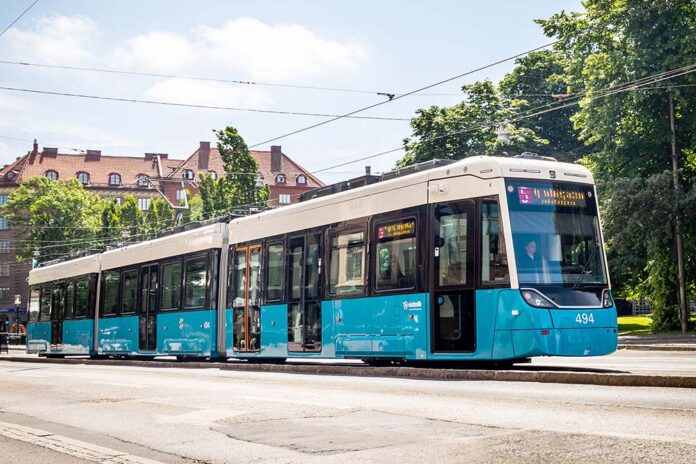Kiepe Electric and consortium partner Alstom have received an order from Swedish tram operator Göteborgs Spårvägar and county transit agency Västtrafik to supply an additional 40 longer trams.
Kiepe Electric is a brand of Knorr-Bremse, the braking systems specialist and provider of other systems for rail and commercial vehicles. The first Flexity trams from the previous 40-vehicle order entered service in September 2020. Equipped with vehicle systems technology from Kiepe Electric and numerous subsystems from Knorr-Bremse Group, the new vehicles operate to the highest safety standards, offer high levels of passenger comfort, and further strengthen the city of Gothenburg’s eco-friendly local mass transit services.
- Knorr-Bremse equipping more systems for Siemens Mobility high-speed trains
- Knorr-Bremse now carbon neutral across all sites
- Three major new orders as Knorr-Bremse becomes selected systems partner for new Alstom Coradia Stream train family
Dr. Peter Radina, as Member of the Management Board of Knorr-Bremse Rail Vehicle Systems responsible for Kiepe Electric, observes that: “Göteborgs Spårvägar is making exemplary use of our broad-based systems expertise for this tram project. Working with our project partner Alstom, this means we can fully satisfy our customer’s stringent criteria for passenger comfort, road safety and sustainable mobility.” For Kiepe Electric, the total value of the Västtrafik order for 40 new M34 light rail vehicles is in the mid double-digit million euro range. The order was awarded in the first quarter of 2022. Deliveries of the new vehicles will take place from the beginning of 2024 and continue through to 2026.
“The new trams will be a major plus for the residents of Gothenburg. With 40 new vehicles, finally Gothenburg has a fully accessible LRV fleet capable of transporting many more people,” explains Peter Hermansson, Chairman of the Board of Västtrafik.
After completing 20,000 kilometers of rigorous testing, the first batch of partly bidirectional M33 low-floor trams has proved that they can satisfy the customer’s need for highly reliable operation; they are now in regular service. At 45 meters each, the newly ordered unidirectional M34 trams are significantly longer; each vehicle has enough space for 319
passengers – a 50 percent increase in capacity. The key criteria remain the same, however: accessibility, comfort, safety, and sustainability. To help increase their overall sustainability, the traction system supplied by Kiepe Electric was developed with particular emphasis on energy efficiency and ultra-low maintenance costs.
The all-electric design of the trams works really well thanks to space-saving hardware, smoothly operating integrated systems from a single source, and Kiepe fleet management for facilitating maintenance. Alexander Ketterl, Managing Director of Kiepe Electric, emphasizes, that “the operator, public transit agency and passengers are all very happy with the new trams already in service. Kiepe Electric’s long experience in system design and integration and the methodical collaboration between Knorr-Bremse Group departments and subsidiaries has resulted in and a full in-vehicle systems integration. The resulting high level of passenger comfort and attractive maintenance costs constitute real added value.”
One outcome of the close collaboration between the engineers at Kiepe Electric, Knorr- Bremse Rail Vehicle Systems and Alstom is the outstanding overall performance of the various braking systems – both operator and passengers have commented on the comfortable ride. The entrance system, supplied by Knorr-Bremse’s brand IFE, the global market leader for door systems for trains, was harmonized with the Alstom engineering and Kiepe Electric vehicle control technology at an early stage, making it exceptionally reliable in operation. Innovative climate control technology from Merak, Knorr-Bremse’s global brand for HVAC systems, has helped fulfil the customer’s stringent specifications for energy- efficient vehicle systems integration. The use of waste heat from the motors to heat the passenger compartment is an excellent example, among others, reducing energy consumption and consequently cutting the vehicle’s life-cycle costs.







































 0113 2082620
0113 2082620 info@railbusinessdaily.com
info@railbusinessdaily.com 15 Mariner Court, Wakefield WF4 3FL
15 Mariner Court, Wakefield WF4 3FL

